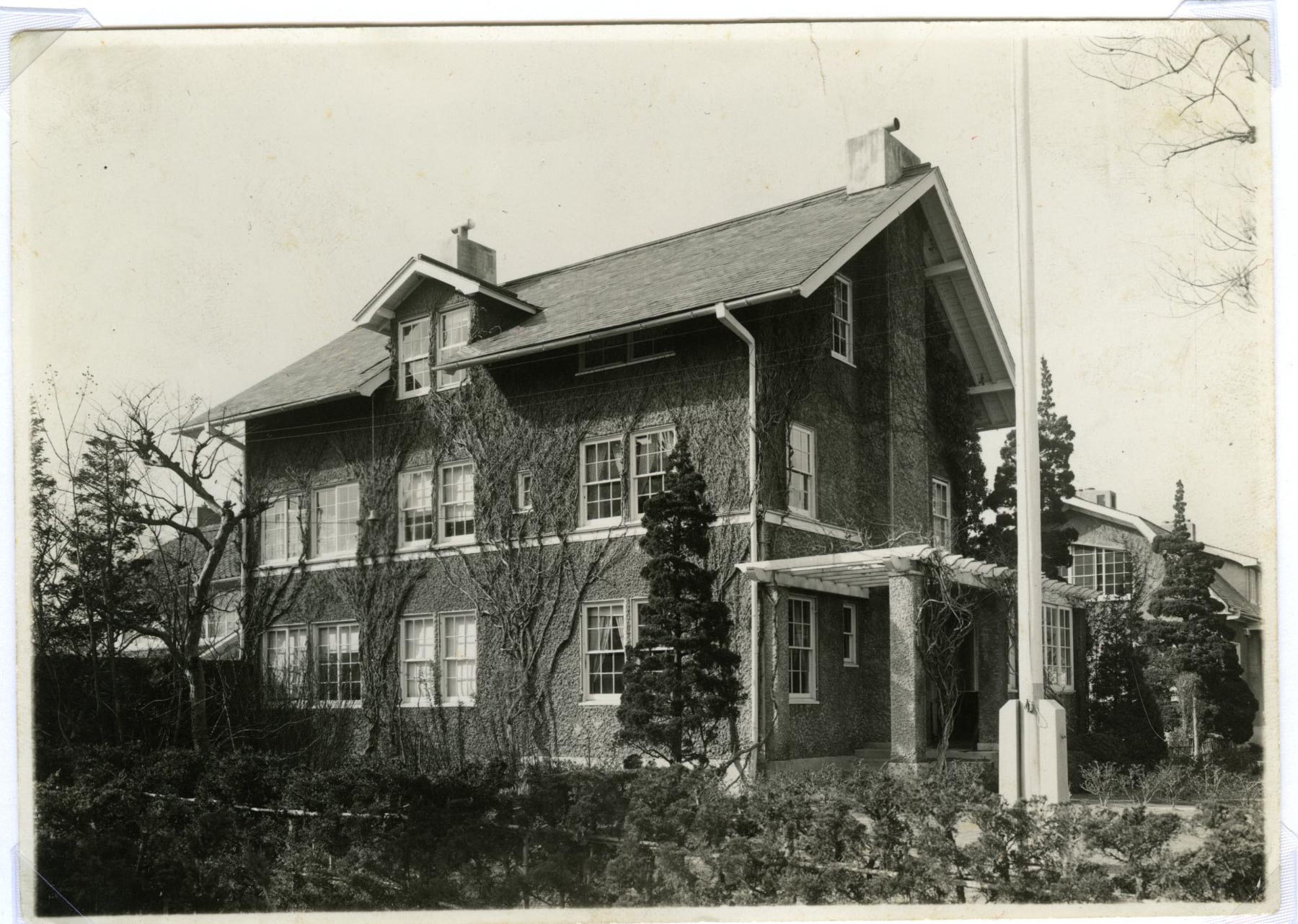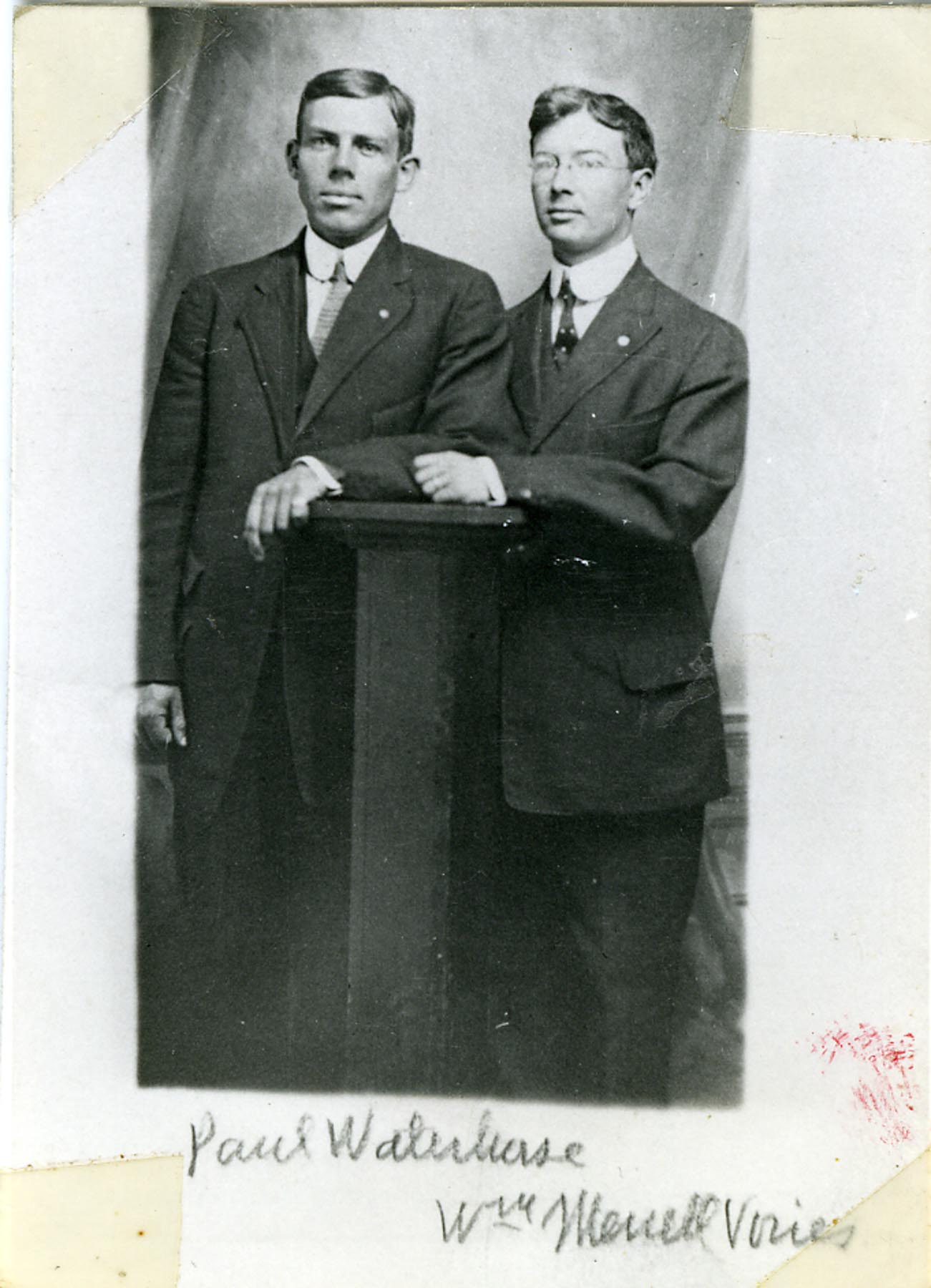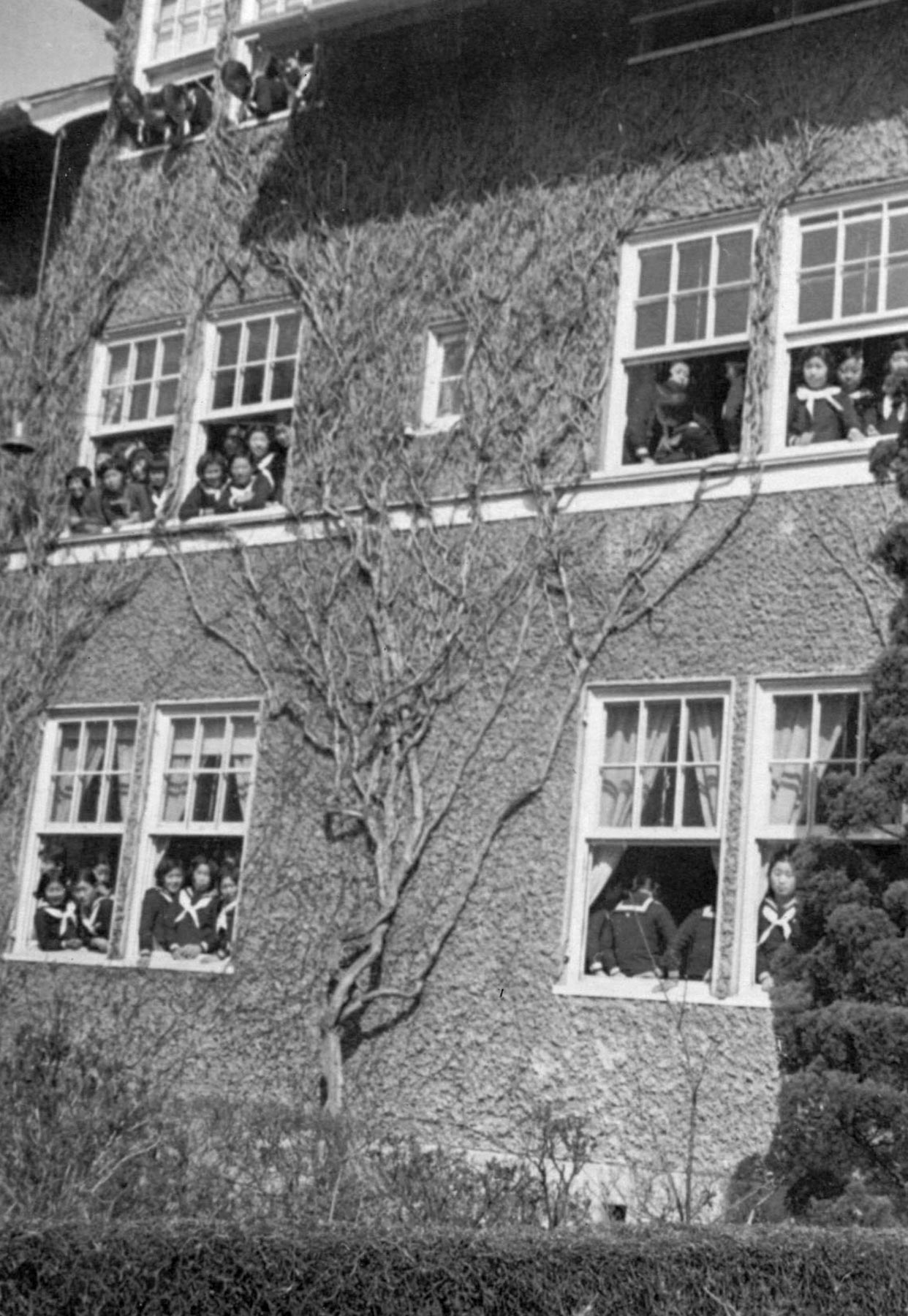Upon first meeting Vories, Waterhouse instantly admired his strong passion and devotion to the missionary work. This led him to join the Omi Mission, which was established by Vories as an umbrella organization for his missionary activities. As a skilled sailor, Waterhouse became the captain of the Galilee Maru, a mission ship on Lake Biwa, and traveled with Vories to the villages that surround the lake.
Western-style buildings were also constructed around the Waterhouse Residence. The Yoshida Residence was built in the same year as the Waterhouse Residence in 1913. In the following year, the Vories Residence was completed, followed by the Omi Mission Double House in 1921. A tennis court was also constructed in the central space between these residences. This area is now called the Western-Style Building District. Except for the Vories Residence, the original architecture remains intact for all of these, as well as for the Omi Kaseijuku Building.




